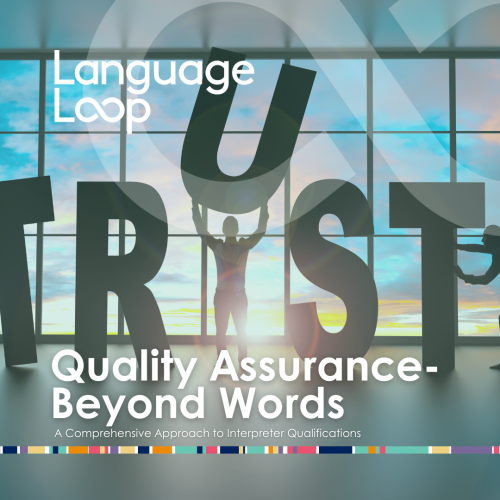A clear and effective briefing is essential when working with a professional interpreter to ensure smooth communication and accurate interpretation.
However, this step is often overlooked. Most of us don’t join a meeting without some preparation. We generally have an idea of the meeting’s content and purpose, understand our role in the meeting, and know the expected outcomes.
This is also necessary for interpreters. To be as effective as possible, some key elements must be communicated before the interpretation begins to limit the possibility of misunderstanding. Keep in mind that all information shared with language professionals is kept confidential.
Whether you’re using in-person, video conference, or telephone interpreting services, a thorough briefing helps the interpreter understand the conversation’s context, participants, and goals. Here’s a guide on how to brief an interpreter effectively across different interpreting modes.
These tips can maximise your multilingual language services and ensure accurate, respectful, and professional interpreting.
1. In-Person Interpreting
In-person interpreting is ideal for face-to-face communication, particularly in medical, legal, or community settings. Here’s how to brief an interpreter for an on-site assignment:
Provide Context: Start by giving the interpreter an overview of the situation. This includes explaining the purpose of the meeting or event, who will be present, and what topics will be discussed. For example, if it’s a medical consultation, mention the patient’s condition and the expected outcome of the conversation.
Clarify Expectations: Working with an Interpreter is a collaborative process, and setting expectations upfront can ensure clarity for everyone involved. It’s essential to ensure that the interpreter understands if any sensitive topics will be covered and the formality required.
Share Documents or Materials: If there are any written documents, such as medical reports, legal documents, or presentation slides, provide them to the interpreter in advance. This helps them prepare for specific terminology or jargon.
Allow Time for Questions: Before starting, give the interpreter a moment to ask questions. They may need clarification on cultural nuances or technical terms.
2. Video Conference Interpreting
With the rise of virtual communication, video conference interpreting has become a popular option for business meetings, healthcare appointments, and more. Here’s how to prepare for a video conference interpreting session:
Technical Setup: Ensure both you and the interpreter have access to the video conferencing platform and are familiar with its features. Test your internet connection, microphone, and camera beforehand to avoid any technical issues during the session. Ensure that the link to the meeting has been sent through to our bookings service 24 hours in advance.
Provide Visuals and Context: In addition to the general briefing, mention any visual materials (e.g., presentations or shared screens) that will be used during the meeting. Inform the interpreter of the flow of the meeting and key participants.
Discuss Protocols: Explain how the meeting will be structured, including when and how the interpreter will interject or take turns. In video settings, it’s important to avoid speaking over each other, so agree on clear hand signals or verbal cues to ensure smooth transitions.
3. Telephone Interpreting
Telephone interpreting is often used for quick, urgent conversations, such as emergencies or customer service calls. Here’s how to brief an interpreter for this mode:
Quick Overview: Telephone interpreting is typically faster and more direct, so keep the briefing concise. Identify which organisation you are calling from. Explain the nature of the call, whether a one-on-one conversation or a conference call, and briefly describe the participants involved.
Clarify the Tone: Let the interpreter know whether the call is formal or informal and whether the conversation involves complex or sensitive topics. This will help the interpreter adapt their language accordingly. In an emergency, consider whether there is anything that the interpreter needs to know about the participants. Is someone injured, likely to have their speech affected, or is the person emotional?
Speak Clearly and Pause: Remind all parties to speak clearly and to pause regularly to allow the interpreter time to convey the message. This is particularly important during telephone interpreting, as no visual cues exist.
Emergency Protocols: If the call is urgent, such as in a healthcare or legal setting, inform the interpreter upfront so they can prioritise clarity and efficiency.
Final Tips for All Modes
Cultural Sensitivity: Let the interpreter know if cultural nuances may affect the conversation. This will help avoid any misunderstandings.
Be Prepared: Ensure you have all necessary documents and information ready before the session so the interpreter can do their job effectively.
Provide Feedback: After the session, offer feedback to the interpreter on what worked well and any areas for improvement. The interpreter may be able to provide you with feedback about how to make the conversation more effective. Together, you can work toward continuous improvement.
Feel free to contact us for more information!








